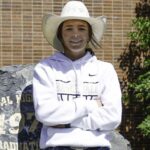The C-130 transport plane, loaded down with 40,000 pounds of ammunition, was about 50 miles from Da Nang when it took numerous hits to the left wing. Air Force Capt. John Nelson immediately shut down engine No. 1. But then engine No. 2 caught fire and he was forced to shut that one down, too. Sheer terror hit.
“Just like with any accident, when things happen so fast, it seems like it’s already over before you know it,” he said. “After the left wing got shot off, I shifted to survival mode and was just trying to save the people on board and the aircraft if I could. I did not have time to be scared.
“We had seven people on board and only five parachutes, so jumping was not an option. My only goal was to land safely on ground that wasn’t in enemy territory,” he said. “We basically skidded down a 2,500-foot runway with two engines on fire while parts of the wing fell off.”
People are also reading…
Nelson spent two days in a field hospital while surgeons removed shrapnel from his right knee. His loadmaster on the flight suffered a broken neck, along with shrapnel in his neck and arm. The others were unharmed.
Two days later, Nelson was back to flying. For his efforts over Da Nang, he was awarded the Purple Heart. In all, Nelson logged 2,600 hours of combat flight during his two years in Vietnam. Nelson is most proud, however, of another award bestowed on him — the Distinguished Flying Cross, which he received for braving hostile ground fire and adverse weather to fly five combat sorties into high-risk airfields to deliver critically needed ammunition and aviation fuel to forces. The Air Force also recognized Nelson with five additional Air Medals for his service.
But Nelson doesn’t like to talk much about his experience or awards from his war days.
“I tend to focus on my friends and fellow pilots who didn’t make it back,” he said. “They were the real heroes. I don’t talk about being a hero. I was just doing my job.”
And his job entailed flying anywhere from eight to 10 combat missions a day all over Vietnam, transporting troops, food, medevac doctors, wounded soldiers, fuel, milk and sometimes body bags. Workdays lasted 14 to 16 grueling hours and pilots rotated 28 in-country with three days back at the base in Taiwan.
“Southeast Asia is really beautiful country, but 70% to 80% of the time it was covered in clouds and rain,” he said. “We’d take off, go above the clouds and land 30 minutes later all the way across the country. And we did that repeatedly, all day long.”
Nelson, whose family hails from Missoula, Montana, graduated from high school there in 1962. After graduating from the University of Montana and marrying his high school sweetheart, Caryl Ann Burgess, Nelson entered the U.S. Air Force.
He attended advanced training at Vance AFB in Enid, Oklahoma, with 55 other pilots (six of whom were later killed in action) and then survival school and weapons training at Sewart AFB in Smyrna, Tennessee. He arrived at the Ching Chuan Kang Air base in Taiwan in 1968.
After completing his tour of Vietnam, Nelson was stationed in Texas at Laredo AFB for two years, where he taught new pilots.
“These new pilots were in their early 20s, and we were 25 and 26 years old training them,” he said. “They thought we were the older guys, but we were all really just kids.”
Nelson, who served a total of nine years, said the military gave him the discipline in his life that has made him a successful financial planner and real estate adviser. He and his family remained in Texas and currently reside in Lubbock.
“I’m very proud that I served in the military,” he said. “I think young people should have to do something like that, whether it’s as a member of the Army Reserve or in active duty. It provides one with an opportunity to listen and follow directions from people other than your parents, and how to get things done and feel good about it.
Nelson, to this day, still has his pilot’s license.





